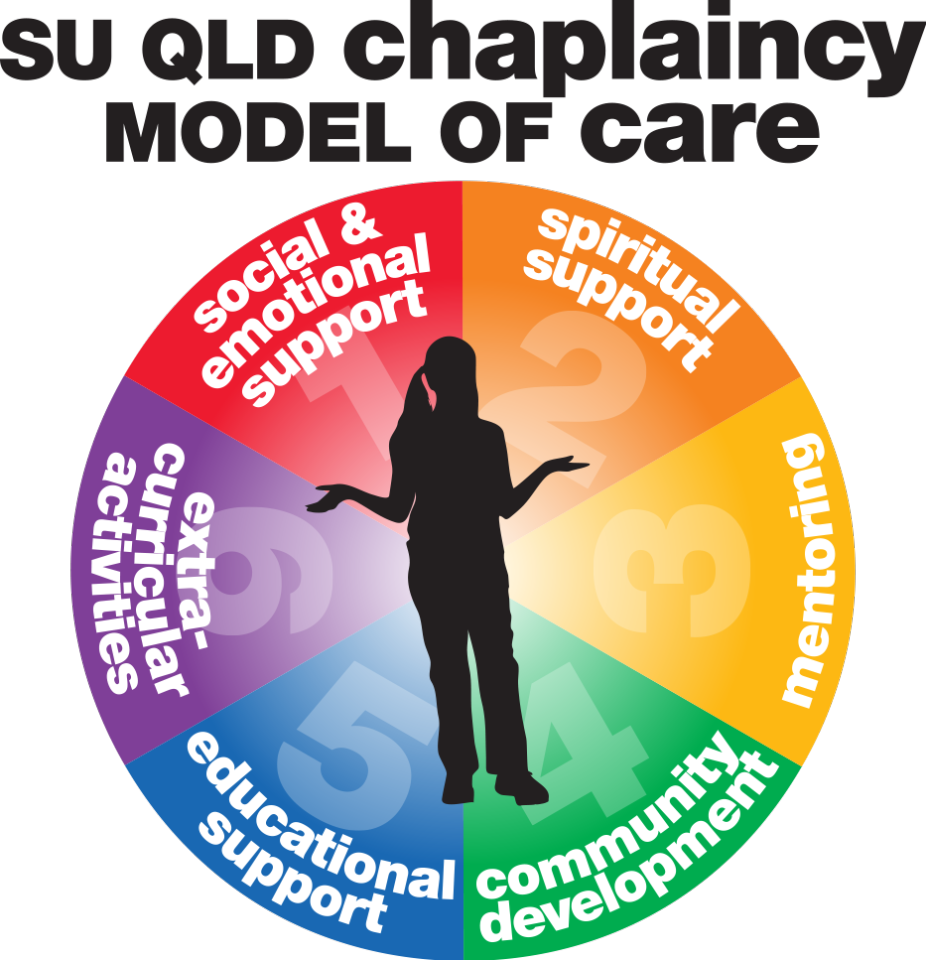One of the things we like to remind our chaplains is that they are not alone as they seek to care for the students, parents and staff of their schools. They aren’t expected to know everything or be able to do everything when it comes to helping them. There are other people and organisations, in the school and beyond, who provide a range of services that help all kinds of people tap into the good things of life. Rather than expect chaplains to know everything or be able to do everything, we expect chaplains to link up with others who do know and can do more to help…
One of the stated role areas of the chaplain is ‘Community Development’. This is described in the recently updated DETE chaplaincy policies as “enhancing the links between the school and its community, working with school-based support staff and community-based youth organisations and networks to support students”. To get this done, chaplains need to make time to network. They need to get around to a range of people and organisations that deal with issues relevant to members of school communities; getting to know staff and services and finding ways to work together for the benefit of others. Networking can take place in lots of different ways – through agency visits, interagency meetings, formal appointments or informal conversations over coffee.
Networking is the act of getting together with others for a purpose. The underlying belief is that something better can be achieved by people getting together, rather than if those people worked alone. Some chaplains struggle with networking because they see it as taking them away from their ‘real work’ of directly helping people. In fact, the reality is that chaplains who network successfully find that the resulting enhanced professional relationships help them to achieve more in their helping work. The benefits of networking are that colleagues get to know each other better and trust each other more, paving the way for more effective collaborations.
Chaplains are required to be in school during school hours throughout the term as much as possible. As such, it is difficult to get out into the community during term time to do any networking. School holiday periods, when chaplains are still ‘at work’ but not ‘at school’, are the best times for chaplains to network with local churches and community organisations. The chaplains who network during these times are not taken away from their direct work in helping people and will find that a range of their helping responses will be more effective through their enhanced professional relationships.
7 Strategies for Networking in Your Community:
- Meet new people at each event. Whenever you attend a group, whether a party, a church event camp or a school staff luncheon, make a point of heading straight for people you don’t know. If you don’t make this goal a habit, you’ll naturally gravitate toward the same old acquaintances.
- Join or visit groups each month. You can attend almost any organisation’s meetings a few times before you must join. Determine what business organizations and activities you would best fit into. It may be the chamber of commerce, the arts council, a museum society, a civic organisation, a soccer league. Attend every function you can that synergizes your goals and opportunities to connect with other Youth Work/Chaplaincy stakeholders.
- Be available and be contactable. Are you hard to contact? Do you have clear contact information on a card, brochure or website?
- Be friendly and approachable. Putting others at ease eliminates self-consciousness. A side benefit: What goes around comes around. If you make the effort to help others, you’ll soon find people helping you. Follow up on your contacts; keep in touch; always share information or resources that might benefit them.
- Set a goal for what you expect from each meeting. Be purposeful when you meet with someone. What do you want to get out of this time with them? But also be open to the unexpected.
- Social networking. Many community groups and like-minded people connect through Social Networking sites such as Facebook. Whether you’re networking in person or online, the same principles and etiquette should apply; be open, find common ground, keep in touch and develop relationships over time.
- Become a resource to others. Once you’ve made good connections through networking you can now be a great resource to others when they are looking for the right people for any situation.
Reference Note:
This list was put together by SU QLD Training staff member Rachel Doherty as part of her SU QLD Training lecture of “Networking and Referral”. Two sources referred to in creating her list of “Seven strategies” were: www.gsd.harvard.edu/professional/career_services/pdf/build_a_network.pdf and www.anthillonline.com/how-to-build-a-professional-network-from-scratch
